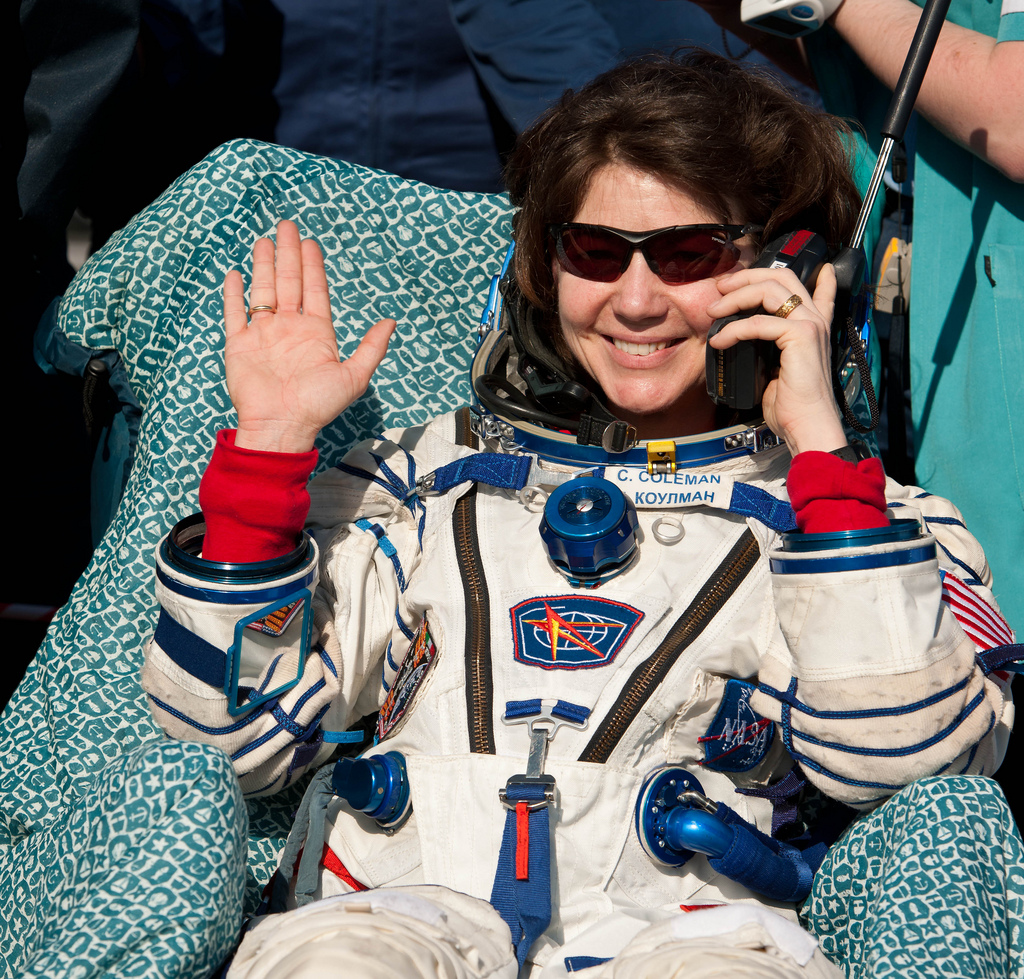Astronaut Cady Coleman Reflects on 159 Days in Space

After five months of living in weightlessness 220 miles above Earth on the International Space Station, astronaut Cady Coleman is getting used to life back on the ground.
Coleman is a NASA astronaut who just completed a stint as a flight engineer on the station's Expedition 27 crew. She landed in Kazakhstan aboard a Russian Soyuz spacecraft on May 24, after 159 days in space.
During Coleman's tenure aboard the orbiting lab, she helped welcome two visiting space shuttle missions: the last trips for shuttles Discovery and Endeavour, which flew in February and May 2011, respectively.
Both of those spaceships are now being processed for retirement at museums.
"It's hard to think that this will be the last mission for that particular orbiter," Coleman said of Endeavour's flight. "But in my mind, the future and exploration are what are important, and the price that we pay is that we can't do everything at one time. It's time to be involved in the future, and we can't do that while we're involved in the past as well." [Back on the Ground: Q&A With Astronaut Cady Coleman]
NASA is now developing a new spacecraft to take humans beyond low-Earth orbit, with the goal of visiting an asteroid and eventually Mars.
Despite being part of two historic final shuttle missions, Coleman said the highlight of her 5 1/2 months in space was the visit of the Japanese robotic cargo ship HTV, or Kounotori 2, which delivered supplies to the station in January 2011. Kounotori 2 was only the second of its kind.
Breaking space news, the latest updates on rocket launches, skywatching events and more!
"Getting to be part of the crew that captured the HTV, the Japanese supply ship, was a really significant and powerful event for myself and, I think, for our crew," Coleman told SPACE.com. "There's nothing that compares to the feeling of having a many-tons supply ship just 15 feet away from the space station, and be the person to, in this case, successfully capture it and berth it to the space station."
Coleman achieved a first during her mission: She played the first flute duet from space, collaborating with Ian Anderson from Jethro Tull on the ground to play a song in honor of the 50-year anniversary of the first human spaceflight. Coleman also played a few other informal flute concerts during her stint on the space station.
This mission was Coleman's third visit to space; she made two voyages on the space shuttle Columbia in 1995 and 1999.
Coleman graduated from the Massachusetts Institute of Technology and has a doctorate from the University of Massachusetts in polymer science and engineering. She was selected as an astronaut candidate in March 1992.
You can follow SPACE.com Senior Writer Clara Moskowitz on Twitter @ClaraMoskowitz. Follow SPACE.com for the latest in space science and exploration news on Twitter @Spacedotcom and on Facebook.

Clara Moskowitz is a science and space writer who joined the Space.com team in 2008 and served as Assistant Managing Editor from 2011 to 2013. Clara has a bachelor's degree in astronomy and physics from Wesleyan University, and a graduate certificate in science writing from the University of California, Santa Cruz. She covers everything from astronomy to human spaceflight and once aced a NASTAR suborbital spaceflight training program for space missions. Clara is currently Associate Editor of Scientific American. To see her latest project is, follow Clara on Twitter.
